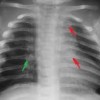Homicide as a cause of pediatric mortality in the United States
Abstract
Homicide is a major cause of pediatric mortality. National law enforcement data were analyzed to characterize and differentiate neonaticide, infanticide, filicide, and overall child homicide. Results include the following: Neonaticides often involved parents or unidentified perpetrators and occurred proportionately more in rural areas than did other types of child homicide.… Read more
